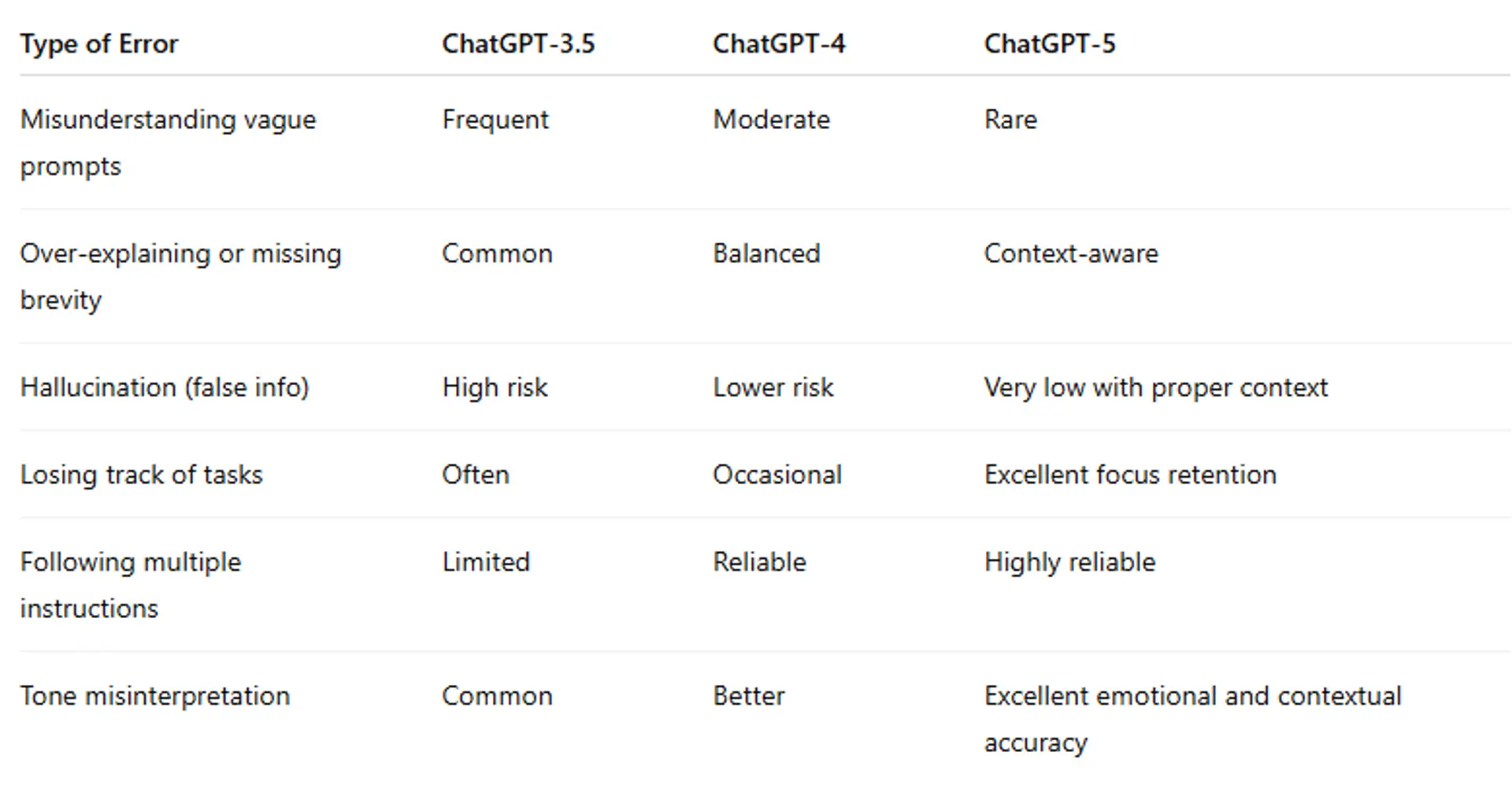

Module 2: Prompt Engineering Basics Lesson 2.4 — Avoiding Pitfalls & Common Mistakes
Module 2: Prompt Engineering Basics
Lesson 2.4 — Avoiding Pitfalls & Common Mistakes
Lesson Objective
By the end of this lesson, you will be able to:
- Identify common mistakes users make when prompting ChatGPT.
- Understand why these errors occur and how different ChatGPT versions respond.
- Apply strategies to improve accuracy, reduce hallucinations, and refine prompt clarity.
- Build habits for consistent, professional-level prompt design.
1. Why Prompt Mistakes Happen
Even advanced users can make mistakes that lead ChatGPT to:
- Produce irrelevant or incorrect results.
- Misunderstand tone or context.
- Forget instructions mid-conversation.
This happens because ChatGPT relies entirely on your words — it cannot read intent beyond what’s written.
Ambiguous, overloaded, or missing instructions confuse its internal reasoning process.
💬 Think of ChatGPT like a mirror.
If you write a vague prompt, it reflects that vagueness right back at you.
2. Common Prompting Mistakes

💬 Insight:
GPT-5’s contextual awareness allows it to “infer” your intent more naturally — but even then, clear and structured prompts produce the best results.
4. How to Avoid Common Pitfalls
✅ a. Always Set Context First
Start with:
The role ChatGPT should play.
The goal of the task.
The audience you’re addressing.
Example:
“You are a customer service trainer. Write a 200-word guide for new agents on handling angry customers professionally.”
✅ b. Break Complex Tasks into Steps
Instead of:
“Write a full business report on AI in healthcare.”
Try:
“List 3 key ways AI is used in healthcare.”
“Summarize benefits of each in 100 words.”
“Combine them into a short report.”
✅ c. Give Constraints
Include word counts, tone, or format:
“Explain blockchain in under 150 words for a beginner audience using simple language.”
✅ d. Restate Instructions Midway
In long chats, remind ChatGPT of key details:
“Remember, you are an expert financial advisor giving advice to college students.”
✅ e. Verify Information
Ask ChatGPT to check itself:
“Review your last response and verify if all claims are factual.”
“List which parts are assumptions and which are evidence-based.”
💬 Pro Tip:
ChatGPT-5 is particularly strong at self-checking. Use “Reflect on your previous answer and correct any factual mistakes.”
5.Real-World Prompt Refinement Examples
❌ Weak Prompt:
“Tell me about AI.”
✅ Improved Prompt:
“You are an AI ethics researcher. Explain in 200 words the main ethical challenges of AI in medical applications, using one real-world example.”
❌ Weak Prompt:
“Make my writing better.”
✅ Improved Prompt:
“You are an editor. Improve the clarity and tone of the following paragraph for a professional audience. Keep it under 150 words and explain what you changed.”
❌ Weak Prompt:
“Write a plan for my business.”
✅ Improved Prompt:
“You are a small business consultant. Create a 3-month marketing plan for a new online clothing store targeting young professionals. Include social media, email, and ad strategies.”
6. Bonus: When ChatGPT Hallucinates
Hallucination = when ChatGPT invents data or sources that don’t exist.
How to prevent it:
- Avoid vague “tell me everything” prompts.
- Ask for sources or verification:
“Cite reliable studies or mention if you’re unsure.”
- Use step-by-step logic prompts:
“Explain your reasoning before giving the final answer.”
- If using GPT-3.5, verify facts manually — it hallucinates more often than GPT-4/5.
7. Learn More with the Videos Below
They can learn additional concepts with the videos below:
- 🎥 ChatGPT Prompt Mistakes to Avoid
- 🎥 Why ChatGPT Gives Wrong Answers & How to Fix It
- 🎥 Perfect ChatGPT Prompt Formula
Lesson Quiz 2.4
Please complete this quiz to check your understanding of the lesson. You must score at least 70% to pass this lesson quiz. This quiz counts toward your final certification progress.
Answer the quiz using the Google Form below.
Conclusion
Mastering ChatGPT means mastering how you communicate with it.
By avoiding vague or overloaded prompts, providing clear context, and adding constraints, you ensure reliable, insightful, and professional results every time — whether you’re using ChatGPT-3.5, 4, or 5.
This marks the end of Module 2: Prompt Engineering Basics.
Next, we’ll begin Module 3: Advanced Prompt Strategies, where you’ll learn to apply everything you’ve mastered to real-world fields like research, content creation, business, and education.
Previous and Next Lessons:
Module 2: Prompt Engineering Basics, Lesson 2.3 — Chains of Prompts / Multi-Step Interactions
Module 3: Advanced Prompt Strategies, Lesson 3.1: Zero-shot vs one-shot vs few-shot prompting
Related Posts
© 2025 Invastor. All Rights Reserved

User Comments